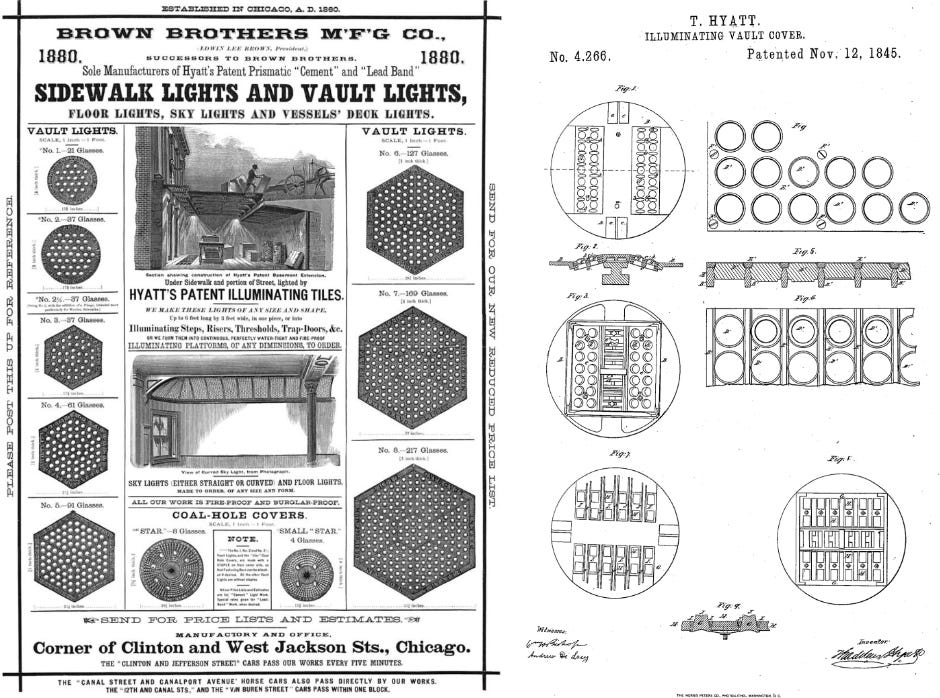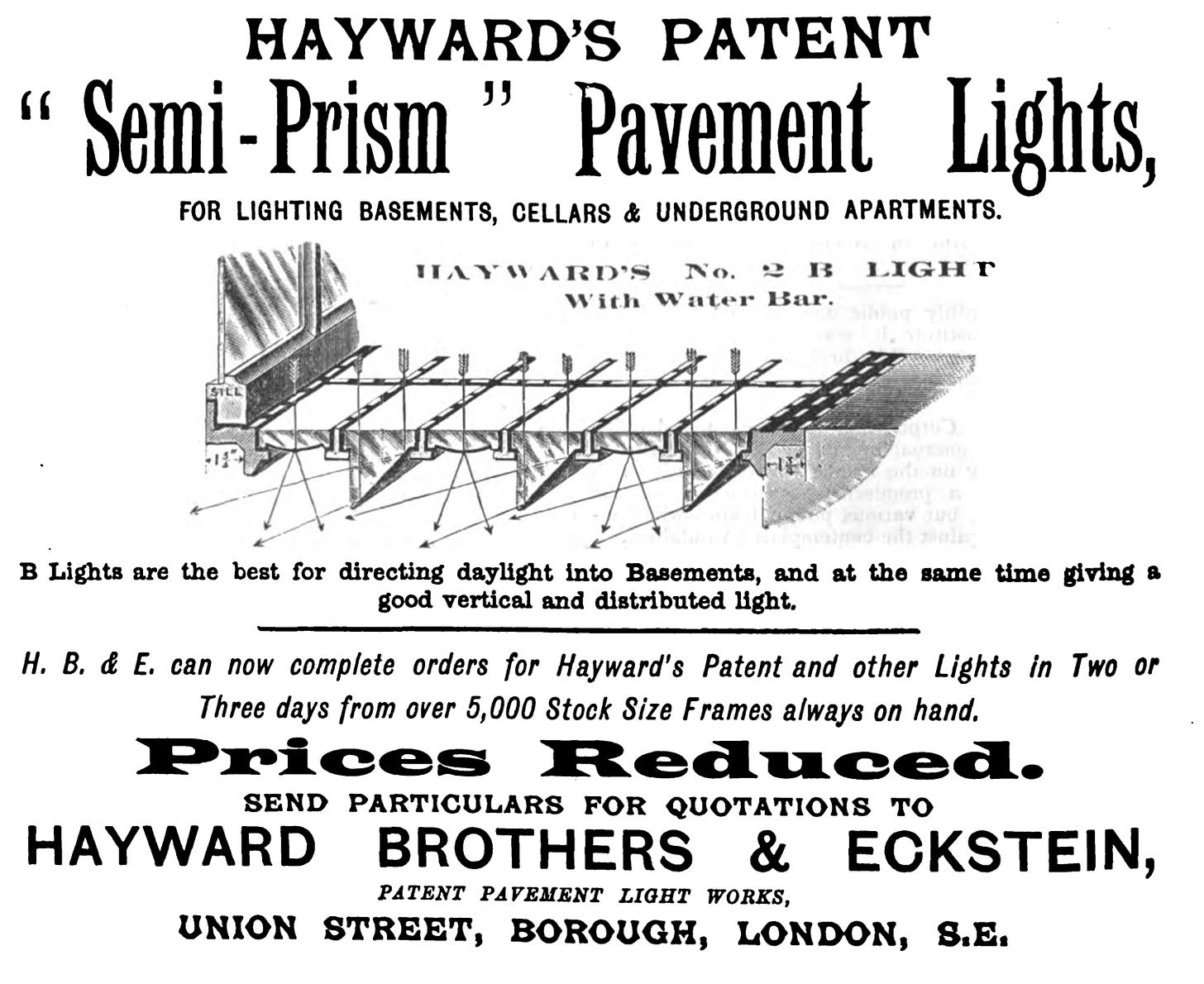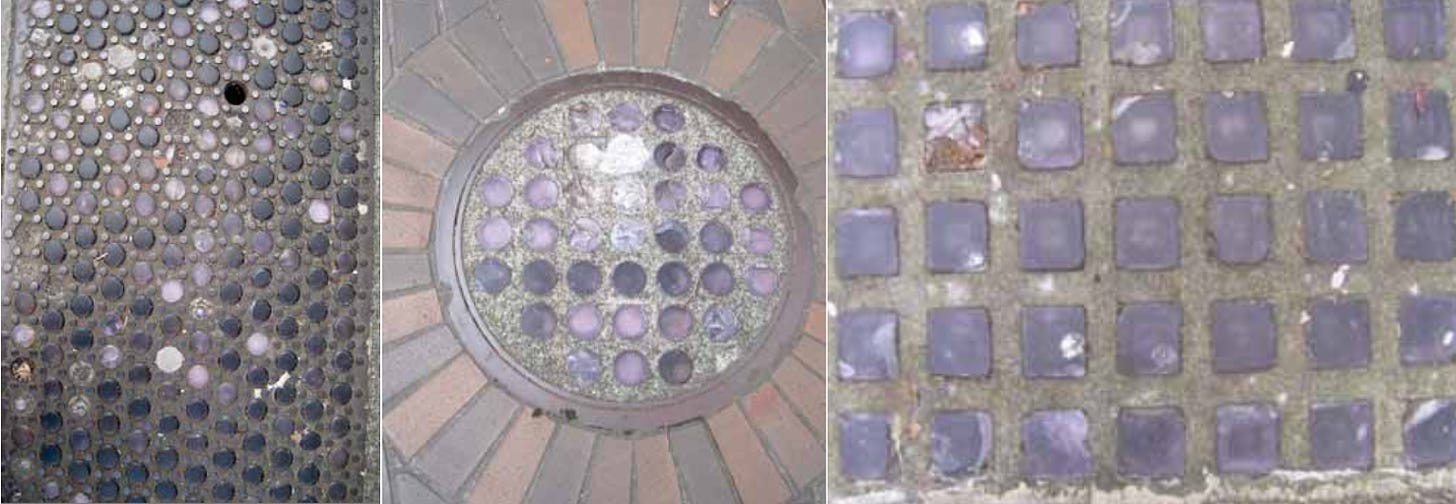On June 6, 1889, downtown Seattle burned to the ground. In response, the Seattle City Council passed new legislation regarding building codes, including Ordinance 2833, in which Section 22 addressed sidewalks. “Openings in such walk, for the admission of light or coal, shall be covered with prismatic lights in iron frames.”
Seattle planners also decided after the Great Fire to raise and widen city streets in the area around Pioneer Square. One result, space under sidewalks, which property owners could use for storage or other perhaps nefarious purposes. In order to light these mini-canyons, builders used prism, or vault, lights, as they are also known. These areaways, as they are called, still exist; I have heard stories of their use as intern offices and know that the old Elliott Bay Bookstore cafe extended into an areaway.
Prism lights are still abundant in downtown Seattle, most abundantly in the Pioneer Square area. In 2011, Seattle University professor Marie Wong helped organize a team to study and report on the lights. They counted 27,417 prisms, of which 12,837 were completely intact. The remaining were damaged or had been replaced with concrete, asphalt, or some other hard material.
According to the website glassian.org, Edward Rockwell created the first prism light in 1834. Eleven years later, Thaddeus Hyatt improved the lights, primarily to address breakage. “I….have invented certain new and useful Improvements in the Manner of Constructing an Illuminating Vault-Cover for the closing of openings from streets…to so arrange the parts that the glass…shall be protected from injury.” (An avid abolitionist, Mr. Hyatt later provided financial support for John Brown.)
By the time Seattle’s builders needed the lights, they benefited from a significant development in lighting technology. In 1871, Edward Lambert Hayward patented his angled prism light in order to “re-direct and disperse light from the vertical to the horizontal, throwing light from the one bright area deep into the backs of otherwise useless spaces.” In the pre-electrical era, building owners needed all the natural light they could get, leading to the thousands of prism lights embedded in Seattle sidewalks.
Now purple, the prisms were originally clear. They subsequently changed color due to manganese dioxide, which becomes purple under long term exposure to ultraviolet light. Ironically, glass makers—as far back as the Romans—added the manganese in order to offset a greenish tinge and make glass colorless.
Seattle is not alone in its wealth of prism lights. They can still be found in places such as London, San Francisco, New York, Chicago, Victoria, B.C., and Boston. Most date from the late 1800s through the 1930s, when electric light prevailed. The reason you don’t see more prism lights in Seattle is that modern building owners are responsible for the area in front of their building and it’s cheaper to cover the lights than to upkeep them. And, sadly, Seattle has done little to promote the protection and conservation of our prism lights.
Word of the Week - Nefarious - From the classical Latin for offending against moral law, the word is often used in connection with wicked or villainous actions, such as I mentioned above. To be perfectly frank, I have no idea what happened in areaways of the past but I do plan on writing a bit more about them (the areaways not their nefariousness) in a future newsletter.








Aw, I never knew they were originally clear!
I’ve always wondered why they were purple and what their purpose was! Thank you!